Prague, the capital of the Czech Republic, is one of the most visited cities in Central Europe. It’s affordable and draws travelers from all over the world to see its beautifully preserved Gothic, Renaissance and Baroque architecture, to taste its delicious beers, and to learn about its complex history. To experience all of Prague’s history and beauty, I strongly recommend visiting the following attractions.
World War II: Walking Tour
The first thing you should do in Prague is take this 2-hour guided World War II Walking Tour. Our tour guide, Jacob, was incredibly knowledgeable and passionate about Czech history. He walked us through all of Prague’s historical milestones, starting with Czechoslovakia’s independence from the Austro-Hungarian Empire in 1918 and ending with the Czech Republic’s presence as an Economic powerhouse in Central Europe.
In all honesty, my knowledge of Czechoslovakia’s role in WWII before this tour was incredibly limited. I had incorrectly assumed it suffered a similar fate as other Eastern European countries and was forcefully invaded by Nazi forces. However, as Jacob taught us, Czechoslovakia’s German-speaking Sudetenland (a small region bordering Czechoslovakia and Germany) was ‘surrendered’ to Hitler by the UK, France, and Italy via the Munich Agreement. The Allied Powers hoped to avoid a Second World War, but Hitler duped these leaders into betraying their ally and quickly invaded Czechoslovakia, placing it under Nazi rule for six years (1939 -1945).
This tour covered many interesting historical sites and events: The Powder Tower, Pachtovský Palace, House of the Black Madonna, Old Town Square, The Astronomical Clock, the hidden city below the Old Town Hall, the Jewish Quarter, and the assassination of Reinhard Heydrich (the Nazi’s third in command), which was the only successful assassination of a Nazi leader during WWII. In addition to the tour, I highly recommend watching the movie Anthropoid, which tells the story the assassination mission and was filmed on-location in Old Town Prague.
By the end of this tour, I developed an understanding of why the Czechoslovakian people took an empathetic stance towards the Soviets and Communism, a part of WWII and Soviet history that had never been explained to me. If you’re a history buff, or just curious about what you didn’t learn in history class, this is the tour for you.
Saints Cyril and Methodius Cathedral
After Reinhard Heydrich was assassinated, Jan Kubiš and Jozef Gabčík, the paratroopers that carried out Operation Anthropoid, sought refuge in New Prague. Due to the Nazi occupation of Czechoslovakia, Operation Anthropoid did not have plan to extract Kubiš, Gabčík, or other paratroopers sent from the UK — most Czechoslovak soldiers knew this would be a one-way trip.
Two weeks after Heydrich’s death, a group of Czechoslovak paratroopers were discovered in the crypt of Saints Cyril and Methodius Cathedral by the German SS forces (they were turned in by a Czechoslovak soldier and traitor. After a brutal, six-hour battle Kubiš was killed by enemy gunfire, while Gabčík and others committed suicide to escape capture.
Today, you can visit the crypt and still see remnants of the June 18, 1942 battle. It has been turned into a museum featuring artifacts of Kubiš, Gabčík, and other resistance fighters.
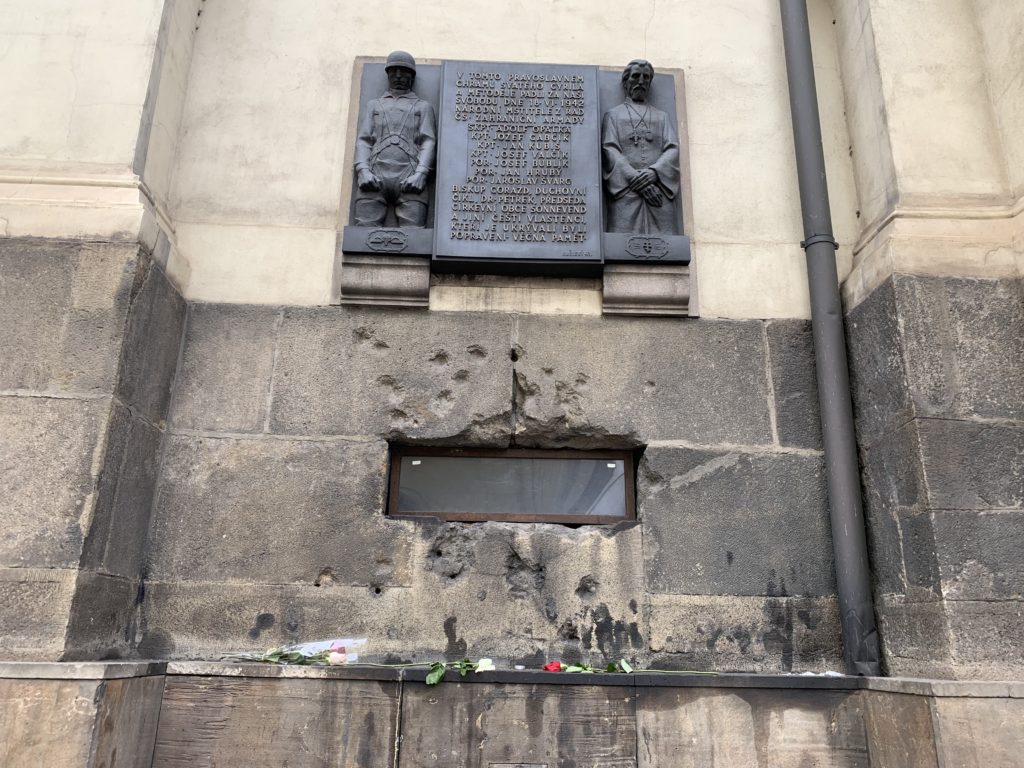
Saints Cyril and Methodius Cathedral (July 2019)
Charles Bridge
Charles Bridge, the 600 year-old pedestrian only bridge, is the most visited attraction in Prague. It offers sweeping views of Prague and the Vltava River; however, the postcard view of Charles Bridge is located just to the south, near the Karlovy lázně tram stop. Charles Bridge is certainly worth a stop, but this place will be jam-packed with street vendors by mid-day. To avoid the crowds and truly experience its beauty, I recommend going right after sun rise.
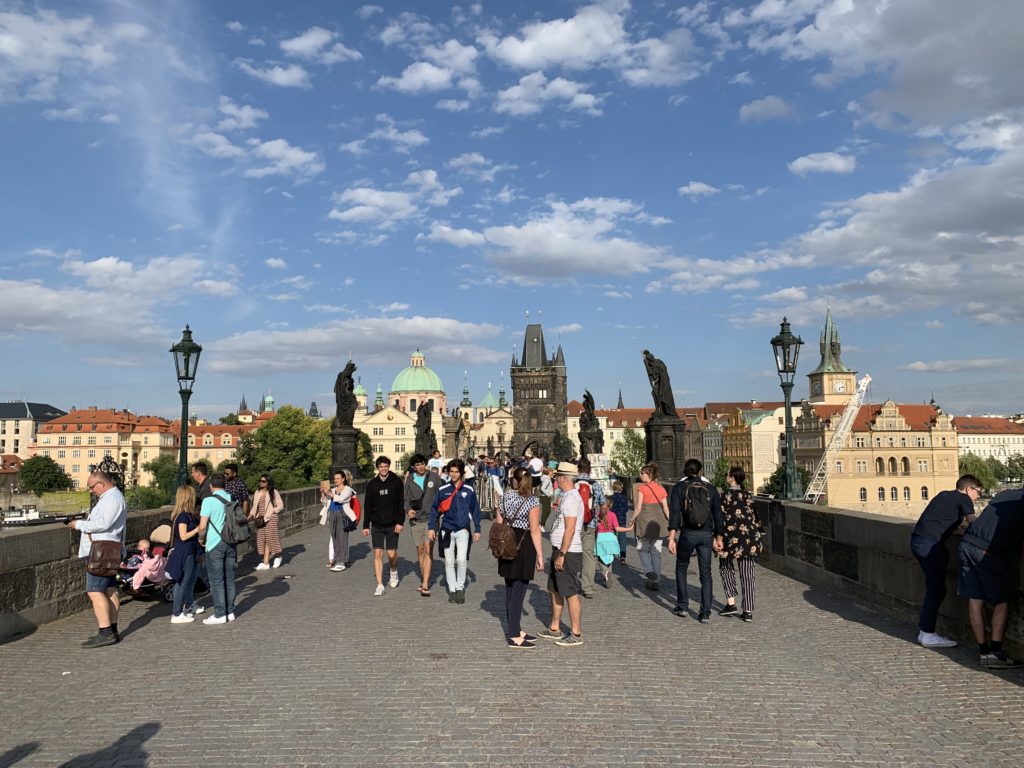
Charles Bridge, Prague (July 2019)
Prague Castle & St. Vitus Cathedral
This 9th Century complex is considered to be the largest ancient castle in the world. Despite its size, you’ll only need two hours to see all the sites: The Old Royal Palace, St. Vitus Cathedral, St. George’s Basilica, the bohemian crown jewels, and the picturesque Golden Lane.
Prague Castle has been ruled by the kings of Bohemia, two Holy Roman emperors, the Nazi Leaders during Germany’s WWII occupation, and the current Czech president.
St. Vitus Cathedral is the one of oldest and largest cathedrals in the Czech Republic. Originally built as a Romanesque church in 925 AD, it was later designed as the Gothic Cathedral by Holy Roman Emperor Charles IV in 1344 AD. Today, many Gothic features are still present: the Cathedral’s massive nave, stained glass windows, flying buttresses, and a massive bronze door depicting the history of the Cathedral and some of Prague’s patron saints.
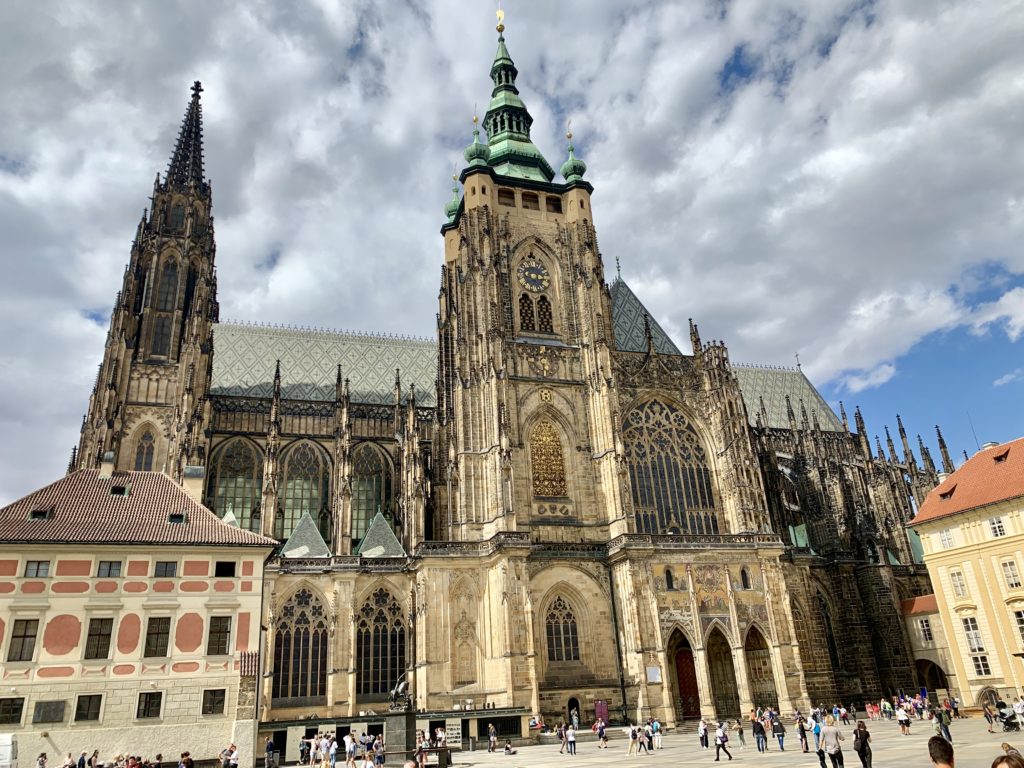
St. Vitus Cathedral, Prague (July 2019)
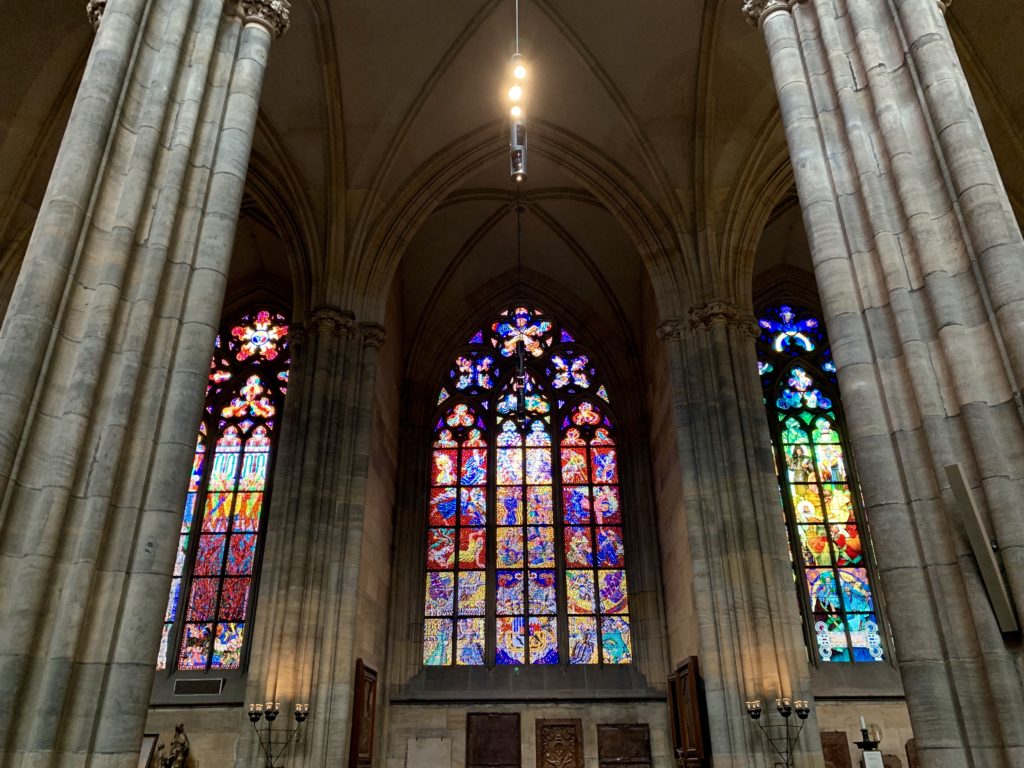
St. Vitus Cathedral, Prague (July 2019)
Mala Strana
Mala Strana is the neighborhood that sits just below Prague Castle. It’s cobblestone-lined streets, pastel buildings, and Renaissance and Baroque churches are straight from a fairytale, which explains why it was chosen to stand-in for 16th Century Vienna in the 1985 Best Picture, Amadeus.
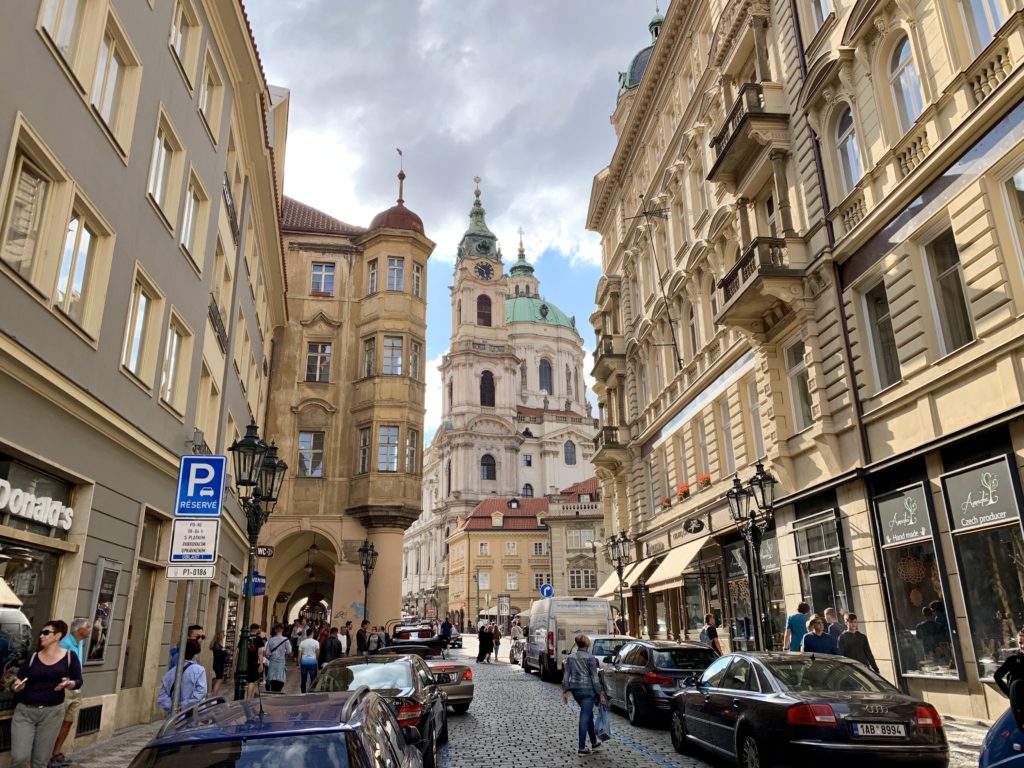
Mala Strana, Prague (July 2019)
Old Town Square
Old Town Square is in the center of Old Prague and home to the Church of Our Lady before Týn and the Old Town Hall . During the holiday season, the Old Town Square hosts the luminous ‘Christmas Markets’, which are modeled after Prague’s medieval markets.
The Church of Our Lady before Týn is a 13th Century medieval Gothic church featuring two [ ] towers topped with four spires. While the church itself is not too remarkable, it has served as a backdrop for two historical photographs and events: the German invasion of Prague and the Prague Uprising.
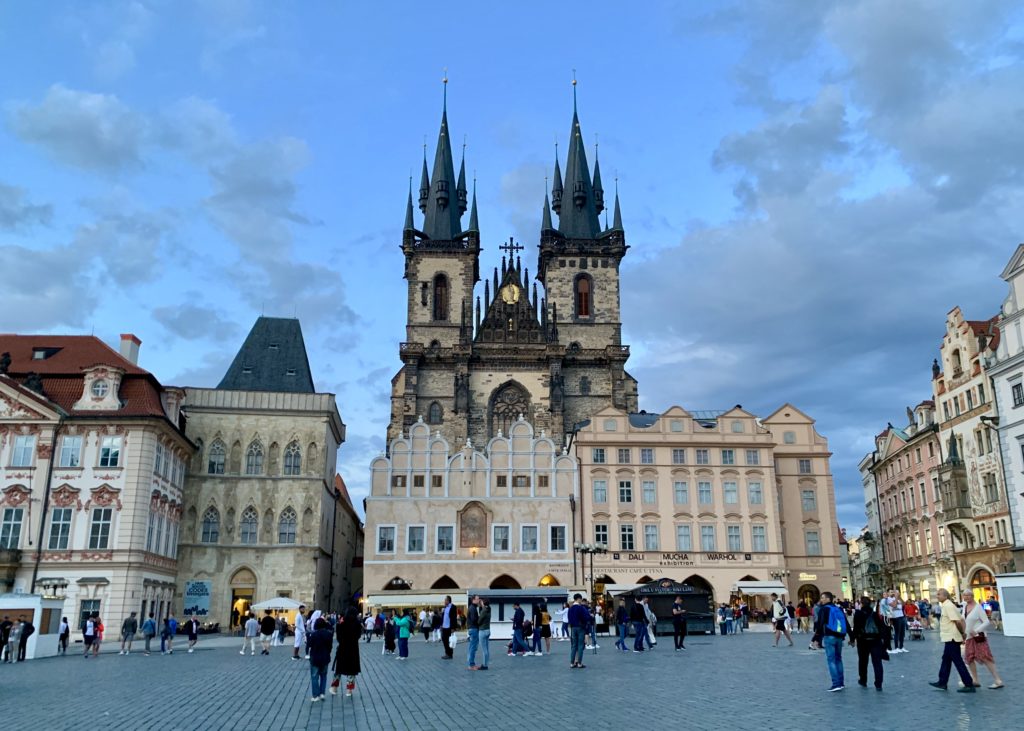
Church of Our Lady before Týn, Old Town Square, Prague (July 2019)
Surprisingly, Old Town Hall was one of the only buildings demolished in Prague during in WWII. During the final days of the war, also known as the Prague Uprising, it served as the center of the Czechoslovakian’s rebellion against the Nazis. The Nazi troops bombed and set fire the Old Town Hall, destroying two-thirds of the building, including the original 14th Century Astronomical Clock which was attached to the south facade.
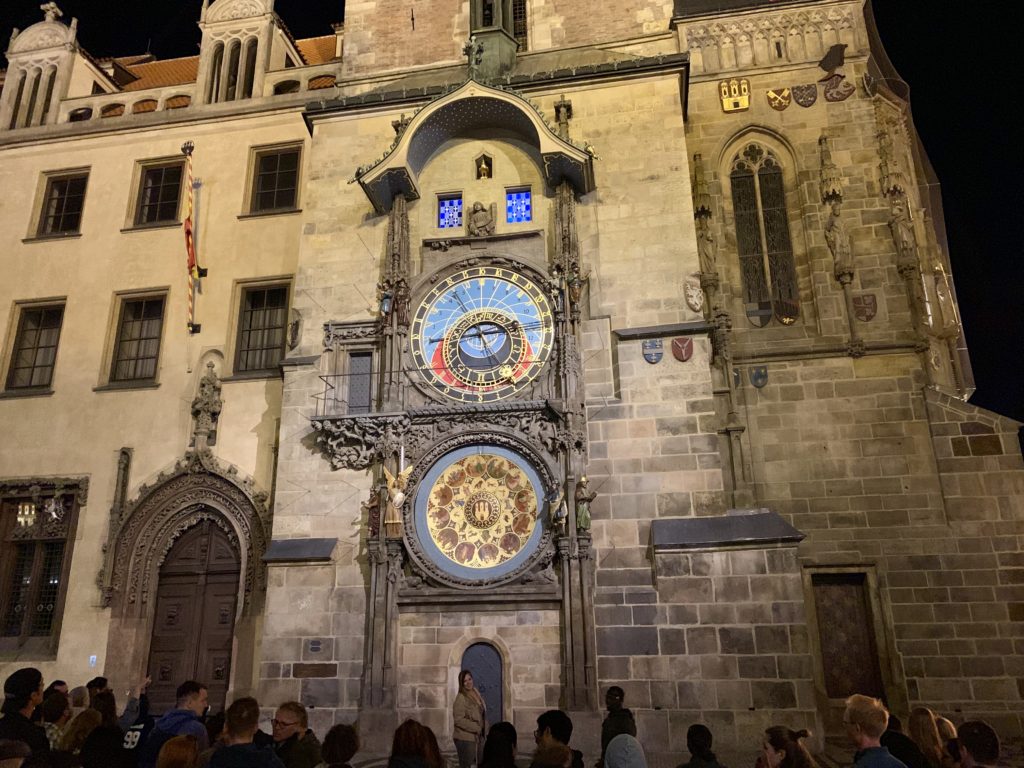
Astronomical Clock (July 2019)
Jewish Quarter
Prague’s Jewish Quarter has an incredibly complicated and brutal history; however, the 20th Century architecture (modeled after Paris) makes it one of the most beautiful neighborhoods in Old Town Prague. Named an UNESCO World Heritage Site in 1992, there are many sites worth visiting in the Jewish Quarter: the oldest Jewish cemetery in Europe, a 13th Century Gothic Synagogue (Old New Synagogue ), Franz Kafka’s birthplace, and the Jewish Museum, which holds one of the largest collections of Jewish relics in the world.
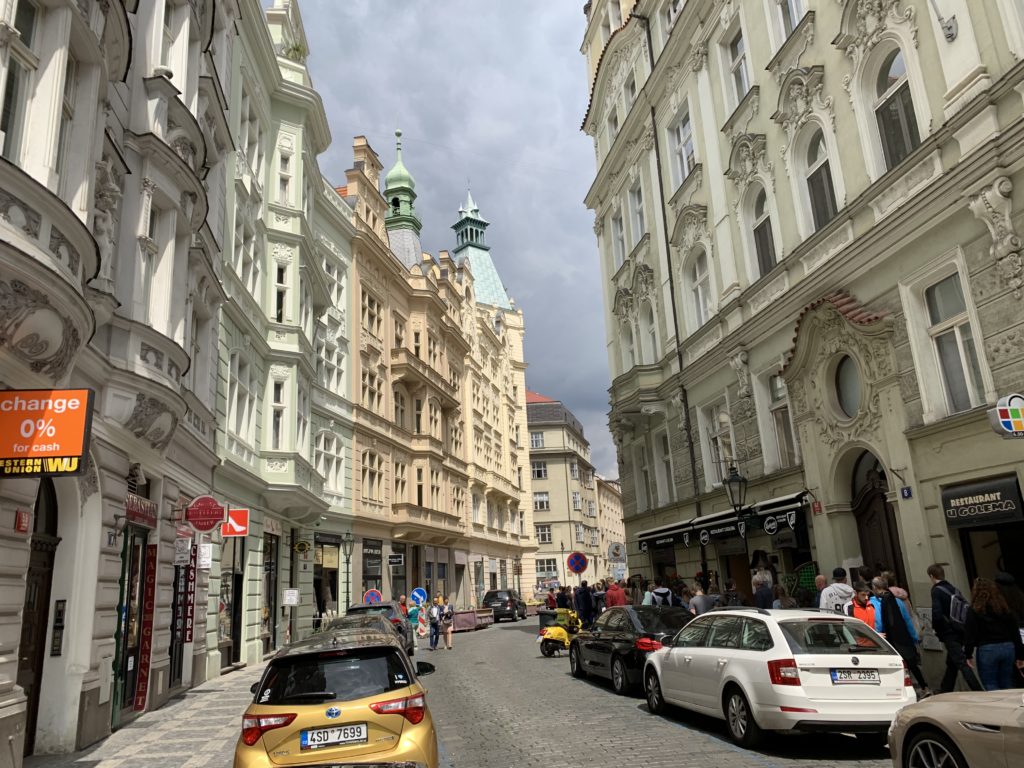
The Jewish Quarter’s 20th Century architecture (July 2019)
The National Museum (Národní Museum)
Admittedly, I did not set foot inside this museum while I was in Prague, but my hotel room was across the street, and I see why this is one of the most beautiful buildings in New Prague. I recommend taking a post-dinner stroll through Wenceslas Square to see this neo-renaissance building lit up at night.

The National Museum, Prague (July 2019)
Petschek Palace
Around the corner from The National Museum is another location with dark ties to WWII. The Petschek Palace, which served as a mercantile bank prior to WWII, eventually became the the German SS headquarters. This site was used by the SS to interrogate and torture Czech resistance fighters, and today there is plaque on the corner of the building to commemorate those that fought in the resistance.
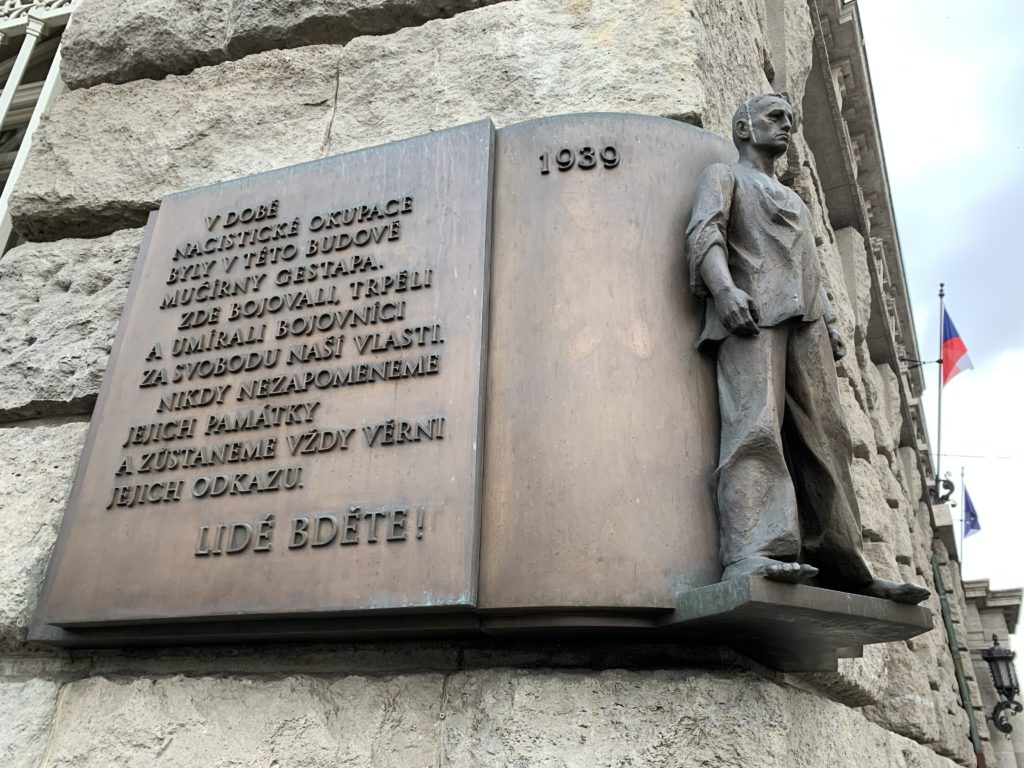
Petschek Palace, Prague (July 2019)